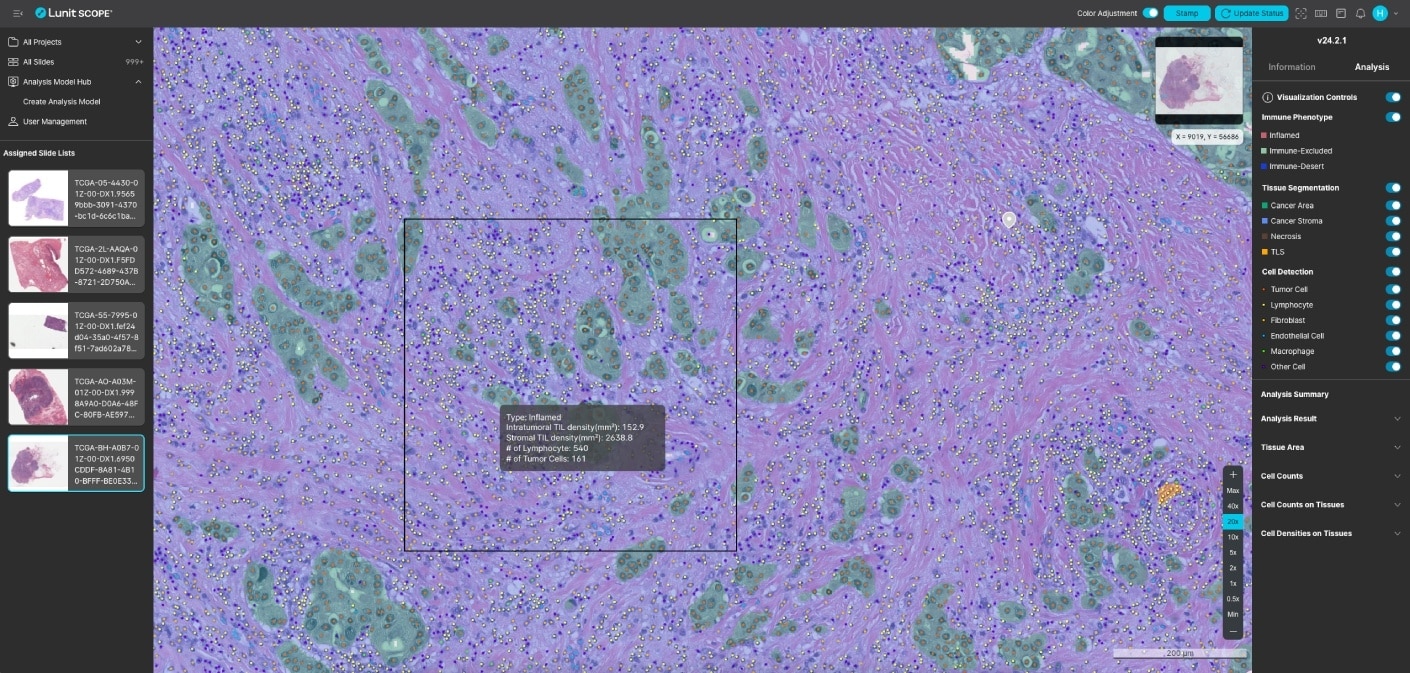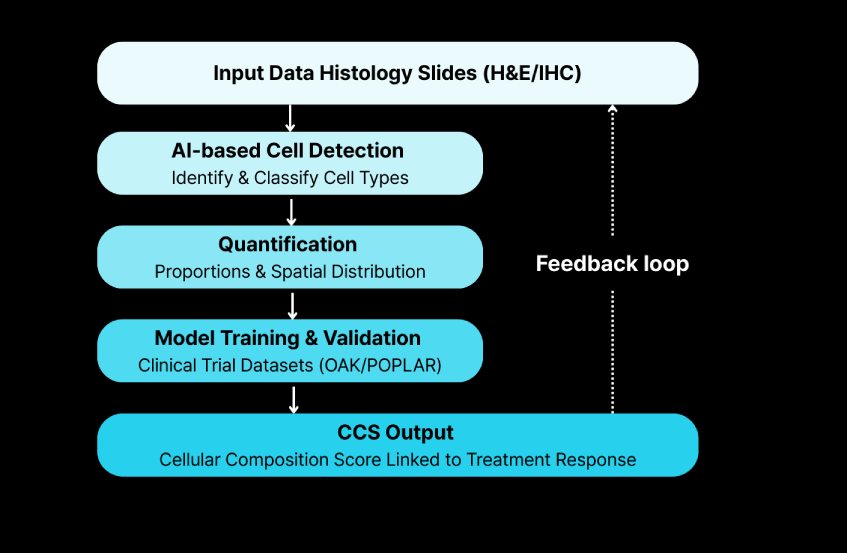
Lunit SCOPE IO® enables biopharma companies to identify tumor-agnostic, H&E-based immune biomarkers with precision and scale—accelerating biomarker development and enriching immunotherapy trials without additional stains or assays.
Trained on 50,000+ whole-slide images and over 10 million cell annotations by hundreds of pathologists worldwide, this AI-powered solution analyzes tumor microenvironments by performing quantitative immune phenotyping and assessing the immune landscape.


Lunit SCOPE IO enabled AI-driven histology analysis to quantify how the tumor microenvironment’s cellular composition correlates with response to atezolizumab. The AI-powered biomarker has shown to hold great potential for patient stratification and for informing treatment selection strategies.

Stay informed with the latest research, product updates, and global partnerships driving innovation in AI-powered precision oncology.
Explore white papers, product brochures, and educational tools designed to help you get the most from Lunit’s AI-powered oncology solutions.
